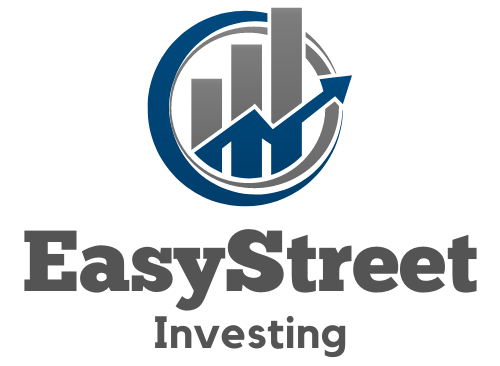Investing in high-yield opportunities can be like riding a rollercoaster – thrilling yet risky. That’s why savvy investors arm themselves with robust risk management strategies, ensuring their portfolio remains resilient against market volatility. In this article, we’ll dive into the essential tactics for safeguarding your investments, from diversification to advanced analysis techniques. You’ll learn how to balance the pursuit of impressive returns with smart, defensive moves that keep your capital secure.
Are you ready to bulletproof your high-yield investment portfolio? We’re about to unpack top-notch strategies that help you navigate the choppy waters of aggressive investing. Whether you’re a seasoned pro or just getting your feet wet, understanding how to mitigate risks will give you the confidence to aim for those lucrative returns without losing sleep. Stick around, and let’s explore how you can have your investment cake and eat it too – safely and smartly.
Important Highlights
1. High-yield investment portfolios, known for their potentially greater returns, require robust risk management strategies to navigate the volatility inherent in these assets. Investors should prioritize a thorough understanding of the creditworthiness of the entities behind these investments. This involves diligent research into financial statements, market positions, and economic indicators that might affect performance.
2. Diversification is a cornerstone in managing risk within high-yield portfolios. By spreading investments across various sectors, geographic regions, and issuers, investors can mitigate the impact of a downturn in any single area. It’s important to balance this portfolio mix with both conservative and aggressive assets to optimize potential gains while cushioning against losses.
3. Regular monitoring and rebalancing are critical actions for maintaining an ideal risk-reward ratio in high-yield portfolios. Investors should establish clear criteria for when to exit positions that no longer meet their risk tolerance or deviate from their strategic goals. Such discipline helps in capturing profits and cutting losses proactively before market shifts can erode gains significantly.
4. Employing hedging techniques can provide a safety net against unexpected market movements that could negatively impact high-yield investments. Tools like options contracts, futures, and swap agreements allow investors to manage interest rate risks or credit risks more effectively. Understanding how these instruments work is essential as they can be complex and may introduce additional costs or risks if not used properly.
5. For further insights into best practices for high-yield investment portfolios, reputable financial institutions such as the Securities and Exchange Commission offer valuable resources on high-yield bonds. Staying informed about regulatory changes and seeking advice from financial advisors with expertise in high-risk investments can also guide decision-making and strategy refinement over time.
Understanding High-Yield Investment Portfolio Risks
The high-yield investment portfolios often come with greater risks that require astute management strategies. These types of investments can deliver substantial returns, but investors must be aware of the potential for higher rates of default and market volatility. Effective risk management involves understanding the credit risks, interest rate risks, and market risks associated with these investments.
Creating a Diverse Investment Mix
Diversification is a cornerstone of risk management. By spreading investments across various sectors, geographic regions, and asset classes, investors can mitigate the impact of a downturn in any single area. A well-diversified portfolio might include a mix of high-yield bonds, equities, and possibly alternative assets like real estate or commodities.
Assessing Individual Security Risk
Investors should meticulously analyze each security within their portfolio to evaluate its credit risk. This means looking at the issuer’s financial health, debt levels, and cash flow stability. Securities with higher ratings from established credit rating agencies typically have lower default risk but may offer lower yields compared to those with lower credit ratings.
Leveraging Financial Derivatives
Financial derivatives such as options and futures can be used to hedge against portfolio losses. For instance, put options allow investors to sell securities at pre-determined prices and can protect against declining markets. However, it is crucial to understand these instruments thoroughly before using them as part of a risk management strategy.
Maintaining Liquidity in Your Portfolio
Liquidity is essential for managing unexpected market shifts that may require quick rebalancing of assets. Holding positions in more liquid securities ensures that you can act swiftly without significant losses due to large bid-ask spreads or lack of buyers in the market.
Analyzing Interest Rate Exposure
Changes in interest rates can significantly affect high-yield investments. Rising interest rates often lead to declining bond prices, impacting the portfolio value negatively. Using duration analysis helps in understanding how sensitive your portfolio is to changes in interest rates.
Implementing Stop-Loss Orders
Stop-loss orders are an effective tool for preventing significant losses within a high-yield portfolio. By setting predetermined sell points for securities that are dropping in value, investors can cap potential losses automatically.
Regular Portfolio Reassessment and Rebalancing
To maintain alignment with investment goals and risk tolerance levels, periodic reassessment and rebalancing of the portfolio are vital. This process involves selling off outperforming assets and buying underperforming ones to stick to the initial investment strategy.
Focusing on Tax Efficiency
Tax considerations play a significant role in net investment returns. Utilizing tax-efficient accounts like IRAs or considering tax-exempt high-yield investment options can contribute positively to overall performance.
Evaluating Performance Against Benchmarks
Benchmarking allows investors to track their portfolio performance relative to relevant indices or peer groups. Consistent underperformance could signal the need for a strategy reassessment or adjustment.
The Role of Professional Advice
Consulting with financial advisors who specialize in high-yield investments can provide additional insights into complex risk management strategies. They possess expertise that individual investors might lack—especially concerning regulatory changes and advanced analytical methods.
- How do I identify and respond to shifting market trends?
- What steps should I take to improve my high-yield investment portfolio’s resilience?
- In what ways can I balance yield generation with prudent risk control measures?
- How frequently should I conduct portfolio reviews for optimal risk management?
- To what extent do global economic events influence my high-yield investment decisions?
Frequently Asked Questions
What are the key elements of risk management in high-yield portfolios?
Essential components include diversification across various assets, regular portfolio reviews, and understanding the trade-off between potential returns and associated risks. Employing stop-loss orders and setting clear investment goals can also significantly mitigate potential losses.
How do I balance high returns with acceptable risk?
Balancing involves carefully selecting investments that offer higher returns while fitting within your personal risk tolerance. It’s crucial to assess each investment’s risk profile and adjust your portfolio composition accordingly.
Can diversification help reduce risk in high-yield investments?
Absolutely. Diversifying your holdings across different sectors, geographical regions, and asset classes can spread out potential risks, making your portfolio less vulnerable to market fluctuations.
What role does asset allocation play in managing risks?
Asset allocation is about choosing the right mix of asset types based on your risk appetite, investment timeframe, and financial goals. A strategic allocation can help shield your portfolio from unexpected market downturns.
Should I use hedging strategies in my high-yield portfolio?
Hedging can be beneficial as it provides protection against adverse price movements. However, it’s important to understand the costs and implications before implementing these strategies.
How often should I review my investment strategy?
Regular reviews are essential — at least annually or after significant life events or market changes. This helps ensure your strategy remains aligned with your goals and adjusts for any new risks.
Is it wise to invest in high-yield bonds?
High-yield bonds can be a valuable addition for those seeking higher income streams, but be aware of their higher default rates compared to investment-grade bonds. Proper due diligence is key.
What indicators should I watch for changing market conditions?
Keep an eye on economic indicators like interest rates, inflation data, and employment figures. Market trends and geopolitical events can also impact investment performance.
How do I set realistic expectations for high-yield investments?
Educate yourself on historical performance trends of similar investments and remember that past success does not guarantee future results. Setting achievable targets helps manage disappointment and make informed decisions.
What’s the importance of a risk management plan?
A well-crafted plan acts as a roadmap for navigating uncertainties in the financial markets. It helps you make objective decisions and stick to your investment principles during volatile periods.
In Closing: Thoughts on High-Stakes Investing
Risk management in high-yield investing isn’t just a safety net; it’s a strategic tool that enables investors to pursue substantial gains while keeping potential losses in check. Understanding how to construct a resilient portfolio requires not only knowledge of financial instruments but also an insight into one’s own risk tolerance levels.
In high-yield investing, being well-informed and proactive is crucial. Regularly updating your strategy to reflect current economic climates ensures you’re equipped to handle market turbulences with confidence. Remember, effective risk management is the cornerstone of sustainable investing success within any high-stakes financial endeavor.

